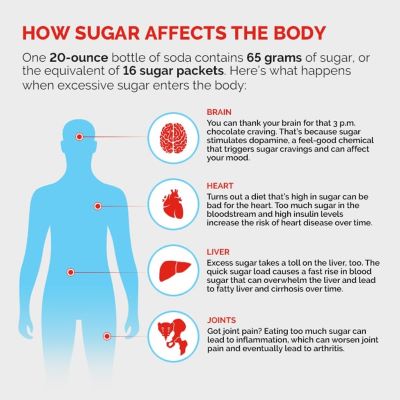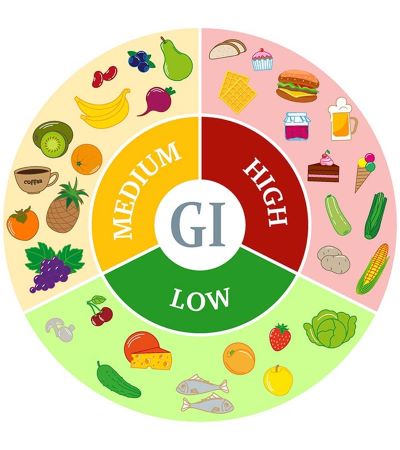Context:
In recent times, the discussion around the detrimental effects of high sugar content in flavored malt-based milk powders and baby food has gained significant attention. Government authorities are raising concerns over the branding of such items as "healthy," pointing out the potentially misleading marketing tactics employed while loading products with added sugar. This issue underscores a broader debate surrounding food labeling, consumer health, and regulatory oversight. Examining the specifics of sugar content, particularly in products like Bournvita, reveals alarming figures: 86.7g of carbohydrates per 100g, with 49.8g attributed to sugar, of which 37.4g is sucrose or added sugar.
Sugar Content in Perspective:
The process of malting, integral to the production of malt-based milk beverages, contributes to sugar content. When cereals undergo malting—germination, drying, roasting, and powdering—the starch breaks down into sugar through enzymatic action. Additionally, roasting enhances flavor as sugars caramelize, further augmenting sweetness. Maltose, a sugar formed during malting, adds to the overall sugar load. Consequently, products like Bournvita contain not only added sugar but also maltose, maltodextrin, and liquid glucose, amplifying their sweetness and carbohydrate content.
FSSAI Regulations and Concerns:
The Food Safety and Standards Authority of India (FSSAI) has delineated regulations regarding sugar content in foods. According to the Food Safety and Standards (Advertising and Claims) Regulations 2018, products with less than 5g of total sugar per 100g can claim to be "low on sugar" and potentially "healthy." However, when products exceed this threshold but still market themselves as "health drinks," it raises concerns, especially regarding childhood consumption. With children consuming multiple servings daily, they often exceed recommended sugar intake limits, posing health risks, including obesity and diabetes, which is particularly alarming given India's high diabetes prevalence.
Controversy Surrounding Baby Food:
The controversy extends to baby food, exemplified by products like Cerelac's Wheat Apple Cherry cereal. Analysis reveals significant sugar content derived from various sources, including milk solids, maltodextrin, and dextrose. For infants transitioning from breast milk to complementary foods, excessive sugar intake poses risks such as pancreatic stress, insulin overproduction, and future health complications like diabetes and obesity. Moreover, ingredients like maltodextrin, utilized for flavor and texture enhancement, have a high glycemic index, exacerbating concerns over blood sugar regulation and metabolic health in infants.
|
What is the Glycemic Index? ● The glycemic index is a measure used to determine how much a food can affect your blood sugar levels. Several factors affect the glycemic index of a food, including the ripeness, nutrient composition, and cooking method. ● Foods are classified as low, medium, or high glycemic foods and ranked on a scale of 0–100. ● The lower the GI of a specific food, the less it may affect your blood sugar levels Here are the three GI ratings:
● Low: 55 or less ● Medium: 56–69 ● High: 70 or above |
Implications and Health Concerns:
India faces a burgeoning diabetes epidemic, affecting millions. Excessive sugar consumption exacerbates this crisis, underscoring the urgency for regulatory intervention and public awareness. The FSSAI's draft notification on High Fat, Sugar, Salt (HFSS) foods represents a step towards addressing this issue. However, its effectiveness hinges on clear guidelines for labeling and consumer education. While the proposal advocates for health rating stars over warning labels, critics argue for more straightforward warnings, given consumers' limited time and expertise to decipher nutritional information.
Path Forward and Regulatory Reform:
Moving forward, comprehensive regulatory reform is imperative to redefine what constitutes "healthy" and "unhealthy" foods across all categories. Dr. Arun Gupta (Convener of the Nutrition Advocacy in Public Interest (NAPi) and former member of the PM’s Council on India’s Nutrition Challenges) emphasizes the need to revisit existing regulations, particularly those permitting sugar in infant nutrition products. Strengthening regulations on front-of-pack labeling and cracking down on illegal advertisements for infant foods are crucial steps. Additionally, addressing marketing strategies that promote sugary products as healthy, especially to vulnerable populations like children, is paramount for safeguarding public health.
Conclusion:
The debate over sugar content in malt-based milk beverages and baby food underscores broader concerns regarding food labeling, consumer health, and regulatory oversight in India. The pervasive presence of added sugars in these products raises alarm bells, particularly concerning childhood consumption and the looming diabetes epidemic. While regulatory measures such as the FSSAI's draft notification on HFSS foods represent positive steps, there's a pressing need for comprehensive reform to redefine health standards and enhance consumer protection. Through collaborative efforts between government agencies, health advocates, and industry stakeholders, India can navigate towards a healthier food environment, mitigating the risks associated with excessive sugar intake and ensuring a brighter, healthier future for its population.
|
Probable Questions for UPSC Mains Exam
|
Source – The Hindu








